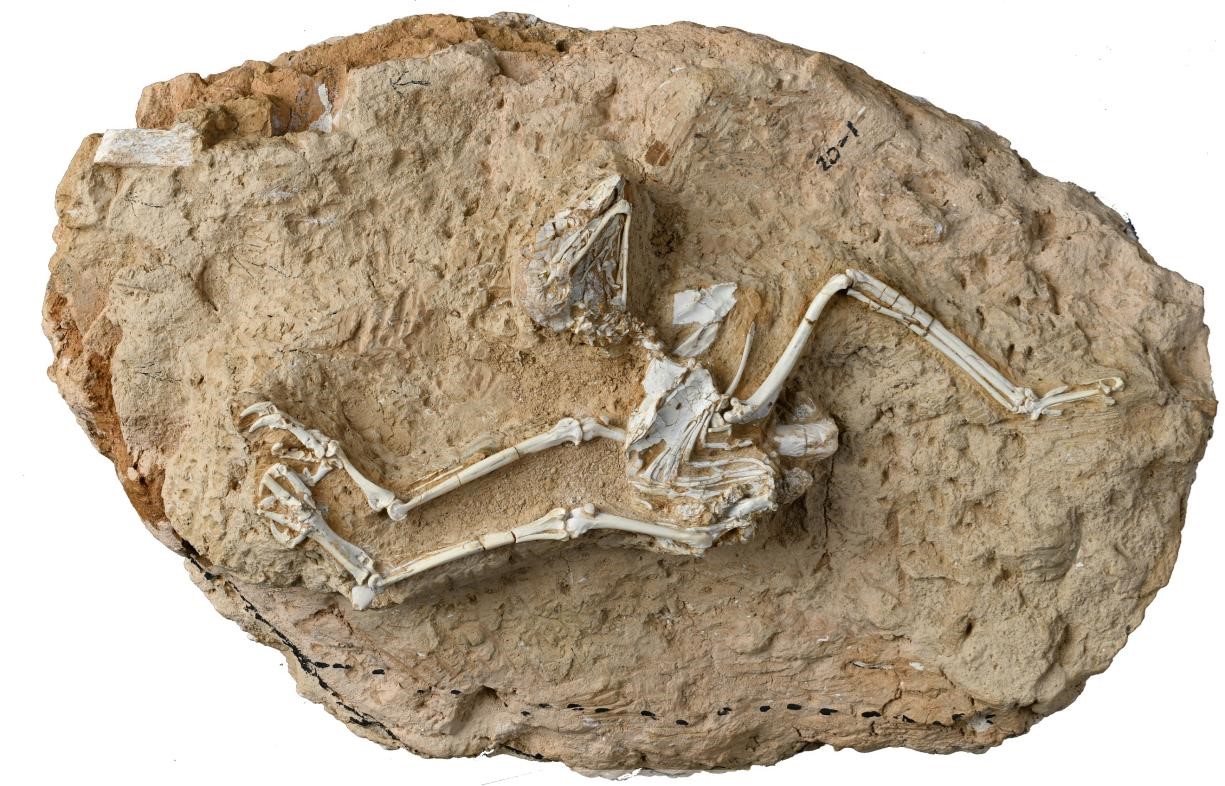Owl’s nocturnal habits stand out from most birds, and in various cultures they are associated with wisdom or even the magical world of Harry Potter. We describe here a unique fossil of an extinct owl species that was instead active during the day. This species links to some of the few daytime active owls and fills in a six-million-year gap in their evolutionary history.
Views 1825
Reading time 3.5 min
published on Aug 18, 2023
The daytime evolutionary history of owl has largely been hidden and not studied in depth before due to the lack of definite fossil evidence. Here, we found a new fossil owl skeleton embedded in more than six-million-year-old red clay deposited during the late Miocene Epoch at an elevation of ~2,300 meters in the Linxia Basin. That basin is located in northwestern China, connecting the high elevation Qinghai-Tibetan Plateau of the west and the Loess Plateau of the east. This area is famous for its historical collection of so-called “dragon bones”. After the discovery of the fossil owl by a local farmer, the specimen was curated in Shandong Tianyu Museum in China. The museum’s Hall of Neogene Paleontology exhibited it for years before it drew our attention during a visit in 2019.
Even though much of the skeleton was not exposed and obscured behind exhibit glass, the raptorial foot and curved beak provided clear evidence of its owl affinity. The extreme shortening of the basal toe bones in its third and fourth toes and the shape of its fused foot bones characterized the raptorial feet. Through the assistance of the director of the museum, Zheng-Xiaoting, we luckily got the approval for a research loan to transfer the skeleton to our fossil preparation lab in Beijing, where it was prepared by a senior technician in the Institute of Vertebrate Paleontology and Paleoanthropology in Beijing (IVPP). With the help of air pens and microscopy, the preparator use his talented hand to carefully remove the clay matrix from the bone. The delicate preparation work took a few months, and the effort paid off by revealing one of the most complete and beautiful owl skeletons known in the world. Except for not having its feathers, the fossil preserves nearly the entire skeleton from the tip of the skull through the wings and legs to the tail bone, along with other body parts rarely seen in fossils like the bones of the eye (scleral ossicles), tongue apparatus (or hyoid), the trachea, the kneecap, the wing and leg muscles tendons - and even the remnants of a small mammal that constituted its last meal. Details of anatomical features of the skull and skeleton (including a large bump on the back part of cheekbone just behind the eye) helped place this extinct species, Miosurnia diurna, within the owl group called Surniini. That group includes living species found around the globe, including the Northern Hawk-Owl and a group of species called pygmy owls (from the scientific genus Glaucidium). The fossil owl skeleton is about 40 centimeters long and estimated to weigh ~240 to 320 grams which is close to that of its living relative. This extinct species lived in the geological context of the gradual uplift of the Qinghai-Tibet Plateau, and coexisted with extinct rhinos, three-toed horses, ostriches, and old-world vultures.
Astoundingly, our detailed study of the rarely fossilized eye bones show that this owl was adapted for and active during the daytime, not the night. By analyzing the geometry, size and shape of different eyes adapted for the day and night across hundreds of birds and reptiles species, we placed the fossil owl close to other owls active during the day. We then mapped the observed day or night behaviors of these hundreds of species on the bird family tree, and the statistical results indicate that the ancestor of all Surniini owls, including Miosurnia, would have been active during the day. Both lines of evidence point to the same conclusion that this fossil and the Surniini group of owls are not nocturnal and have not been so for millions of years.
This extinct species not only represents the first fossil record of an ancient owl active during the day, but also shows that this small group of living owls found all around the world rejected the night millions of years ago. While we do not know why some owls started being active during the day, the evolutionary reason for the change may be associated with this fossil’s high elevation environment and the diverse and diurnal potential mammal prey in the area.
Original Article:
Li, Z., Stidham, T. A., Zheng, X., Wang, Y., Zhao, T., Deng, T., & Zhou, Z. (2022). Early evolution of diurnal habits in owls (Aves, Strigiformes) documented by a new and exquisitely preserved Miocene owl fossil from China. Proceedings of the National Academy of Sciences, 119(15). https://doi.org/10.1073/pnas.2119217119
 Evolution & Behaviour
Evolution & Behaviour



